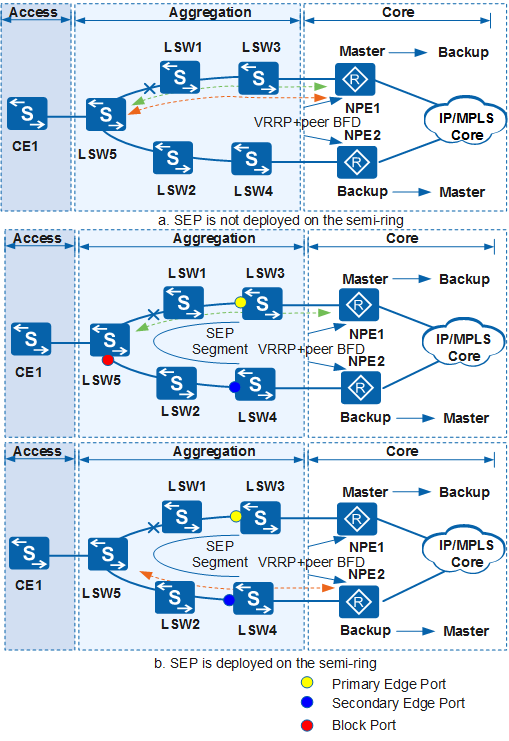SEP Implementation
SEP is a ring network protocol dedicated to the Ethernet link layer. Only two interfaces on a switching device can be added to the same SEP segment (a basic unit for SEP).
To prevent loops in a SEP segment, a ring protection mechanism selectively blocks interfaces to eliminate redundant Ethernet links. When a link on a ring network fails, the device running SEP immediately unblocks the interface and performs link switching to restore communication between nodes.
If SEP is not deployed on the semi-ring, CE1 traffic is still transmitted along the original path, but NPE1 does not forward traffic, causing traffic interruption.
If SEP is deployed on the semi-ring, the blocked interface on LSW5 becomes unblocked, enters the Forwarding state, and sends link state advertisements (LSAs) to instruct other nodes on the SEP segment to update their LSA databases. CE1 traffic is transmitted along backup link LSW5 -> LSW2 -> LSW4 -> NPE2, ensuring uninterrupted traffic transmission.
In typical SEP networking, a physical ring can be configured with only one SEP segment in which only one interface can be blocked. If an interface in a complete SEP segment is blocked, all service data is transmitted only along the path where the primary edge interface is located. The path where the secondary edge interface is located remains idle, wasting bandwidth.
SEP multi-instance is used to improve bandwidth efficiency and implement traffic load balancing. SEP multi-instance allows two SEP segments to be configured on a physical ring. Each SEP segment independently detects the completeness of a physical ring and blocks or unblocks interfaces without affecting the other.
For details about SEP multi-instance, see SEP Implementation Mechanisms.
